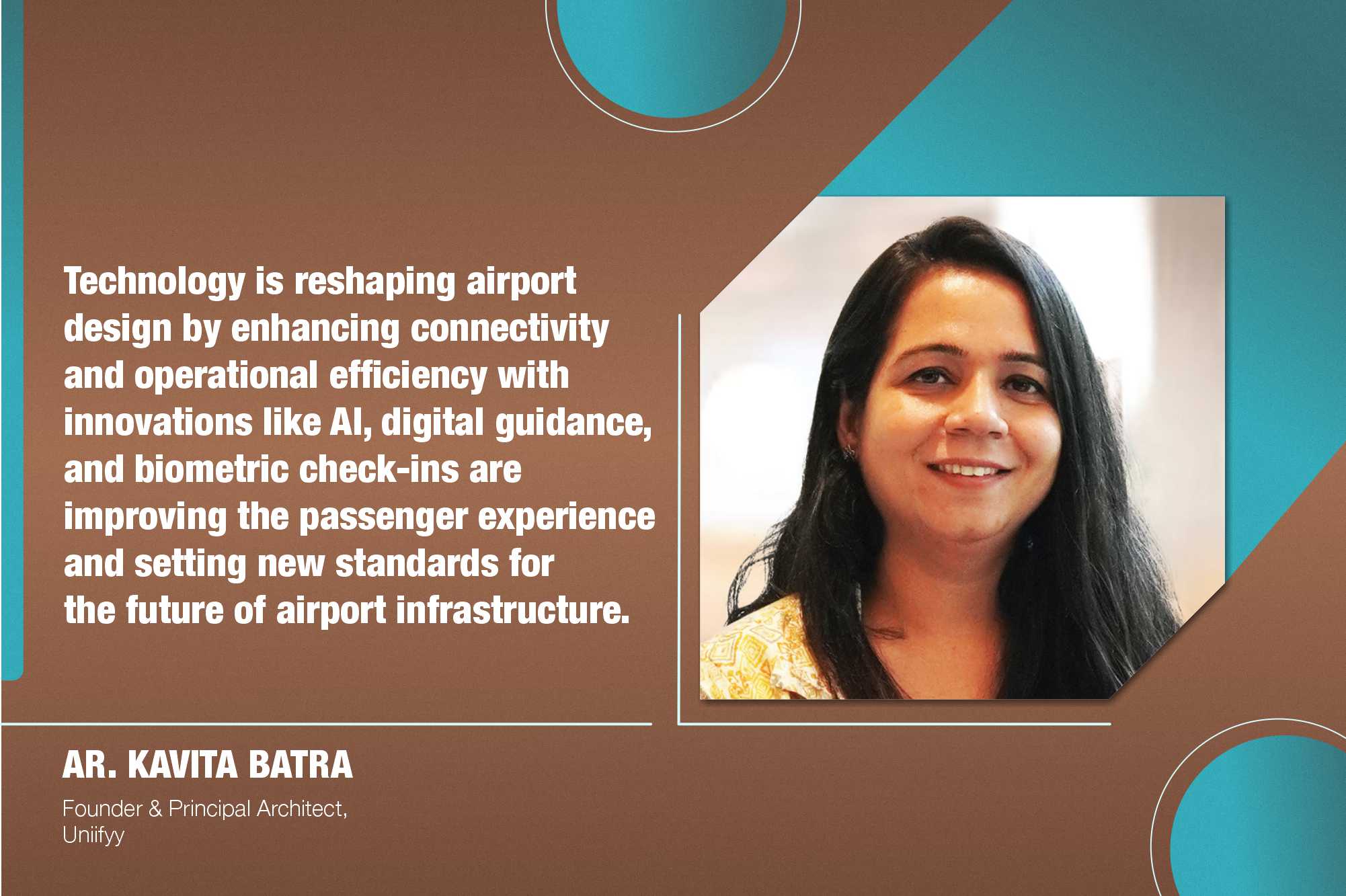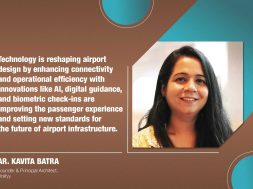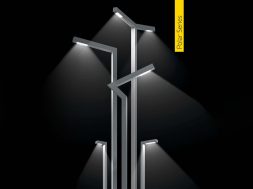Tech-driven airport design

“Technology is reshaping airport design by enhancing connectivity and operational efficiency with innovations like AI, digital guidance, and biometric check-ins are improving the passenger experience and setting new standards for the future of airport infrastructure.”Ar. Kavita Batra, Founder &Principal Architect, Uniifyy
Ar. Kavita Batra highlights how technological innovations are setting new benchmarks in how airports operate, making travel smoother and more secure than ever before
What guiding principles or design philosophies do you prioritise when conceptualising airport projects, and how do these principles shape the overall architecture?
A strategic approach incorporating passenger volume, local climate, and overall user experience is essential when designing airports. Functionality and efficiency are crucial to this operation as they ensure smooth passenger flow. Well-thought-out layouts can improve navigation and reduce walking distances, lowering stress levels and enhancing overall satisfaction. It’s also critical to align the design with the climate and local surroundings. By carefully selecting materials and design strategies, airports can implement sustainable practices and minimise reliance on artificial systems. Thoughtful use of adequate lighting and spacious areas further refines the airport’s design, creating a more efficient and welcoming atmosphere.

How do you leverage technological advancements and innovation to enhance airport infrastructure’s functionality and aesthetics?
Technology has become increasingly important in airport design, ensuring optimal connectivity and smooth operation. Passenger-centric improvements and other technological elements are setting new standards for airport design. Digital guidance, biometric check-ins, and personalised services make the journey from curb to gate more efficient. Artificial intelligence (AI) is also gaining traction in airport design, enhancing operations. Smart sensors and the Internet of Things (IoT) improve security by providing alerts about crowd flow. For instance, Shanghai Hongqiao International Airport uses AI and machine learning (ML) technologies to enhance traveller experience and operational efficiency.
In your experience, how do you achieve a balance between architectural aesthetics and airports’ practical operational needs?
Achieving the best circulation involves selecting a functional layout and flow. Thoughtfully designed amenities, logical pathways, and clear signage help guide passengers more easily. Additionally, improving boarding, security, and check-in processes can enhance the overall experience and reduce congestion. Innovative construction methods can produce structures that are both functional and aesthetically pleasing. Open areas and wide-span roofs accommodate large passenger loads and make a significant visual impact.
What sustainable design strategies do you incorporate into airport projects to minimise environmental impact and promote energy efficiency?
Sustainable airport designs increasingly focus on practical solutions and improved energy efficiency. Implementing energy-efficient HVAC systems and LED lighting reduces overall energy consumption. Motion sensors and automated systems optimise energy use by only consuming it when needed. Installing wind turbines and solar panels on airport property can decrease reliance on non-renewable energy sources. These renewable energy technologies can power runway lighting, terminal buildings, and other operational areas.
For more details , Visit : https://uniifyy.com/home
Cookie Consent
We use cookies to personalize your experience. By continuing to visit this website you agree to our Terms & Conditions, Privacy Policy and Cookie Policy.










